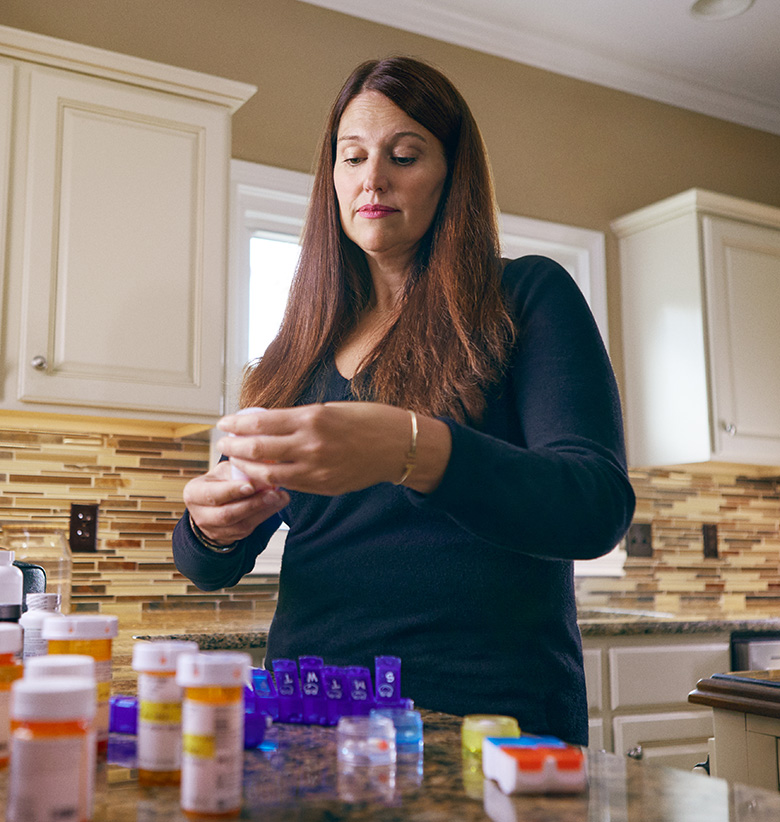“It is important that we seek support as we navigate this disorder.”
Managing Your HypoPara


With active vitamin D and calcium:
Calcium levels may have to be checked
often
Many pills may be required to maintain
calcium levels
Calcium intake from diet and antacids
may also affect calcium levels
Signs and symptoms of HypoPara may
still occur

Over Time, Missing PTH May Have Serious Consequences
Severe high and low calcium levels may still occur with active vitamin D and calcium. These episodes are hard to predict and could require emergency attention.



Symptoms of low blood calcium levels
Brain
Depression, anger, confusion or brain fog, seizures
Heart
Abnormal heart rate, symptoms of congestive heart failure (such as fatigue, weakness)
Gastrointestinal
Abdominal cramps
Respiratory
Lack of breath, wheezing, throat tightness
Muscles
Numbness and a pins-and-needles feeling in the fingers and toes, spasms, twitches, cramps
Signs of high blood calcium levels
Brain
Weakness, headache, drowsiness, confusion or disorientation, poor memory, reduced concentration
Heart
Abnormal heart rate, high blood pressure
Gastrointestinal
Loss of appetite, nausea, vomiting, abdominal pain, constipation
Kidneys
Frequent urination, dry mouth, thirst
Calcium deposits can build up in organs, which may lead to complications over time
Some affected areas of the body include the:
Brain
Heart
Eyes
Kidneys*
Blood vessels
*Calcium deposits in the kidneys, kidney stones, and chronic kidney disease are mostly the result of treatment with active vitamin D and calcium rather than of HypoPara itself.
Signs That Your HypoPara May Not Be Fully Addressed
Low calcium levels may lead to ER visits and symptoms such as muscle cramps and seizures
Stomach issues may affect how calcium is absorbed
Kidney issues (such as high levels of calcium in urine)
Reduced physical functioning and well-being (such as fatigue, brain fog)
Frequent increases in doses of active vitamin D and calcium
High phosphate levels can contribute to the buildup of calcium in organs over time
Discover the HypoPara-friendly diet
Read more >
Understand HypoPara
Learn moreCa2+=calcium; ER=emergency room; HypoPara=hypoparathyroidism; PTH=parathyroid hormone.


